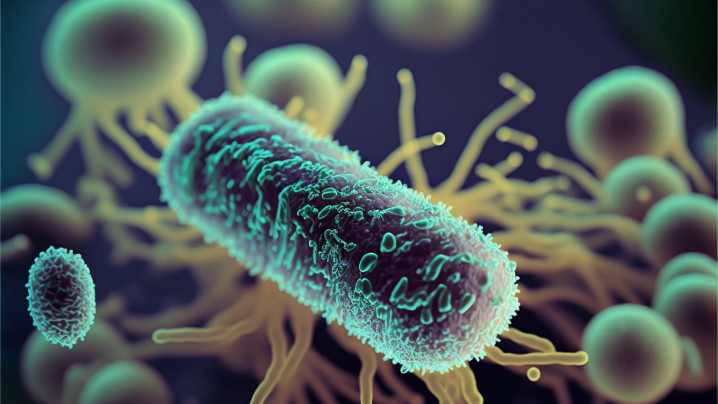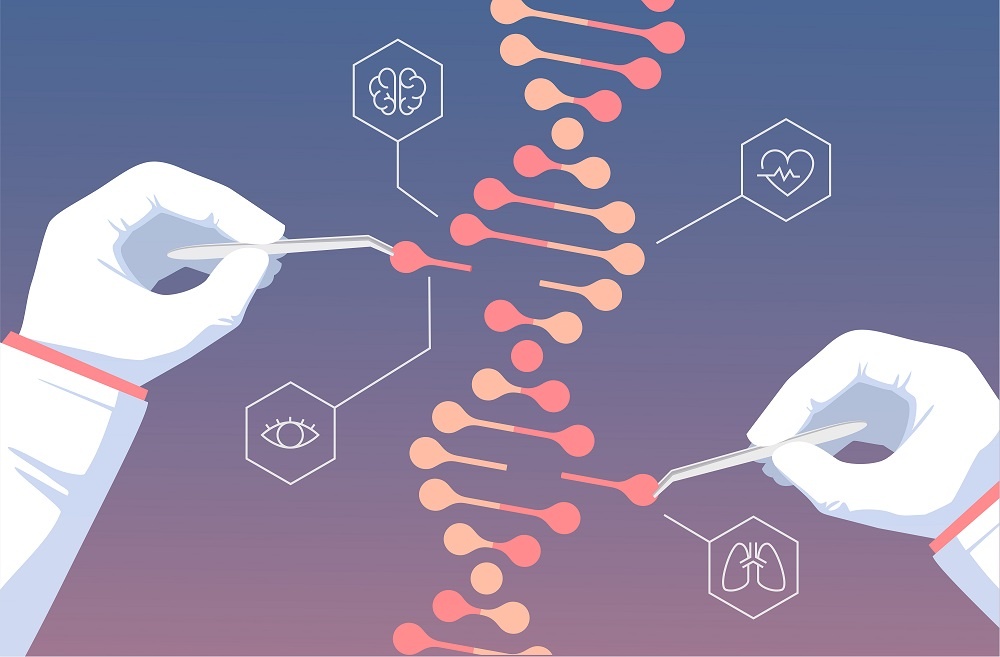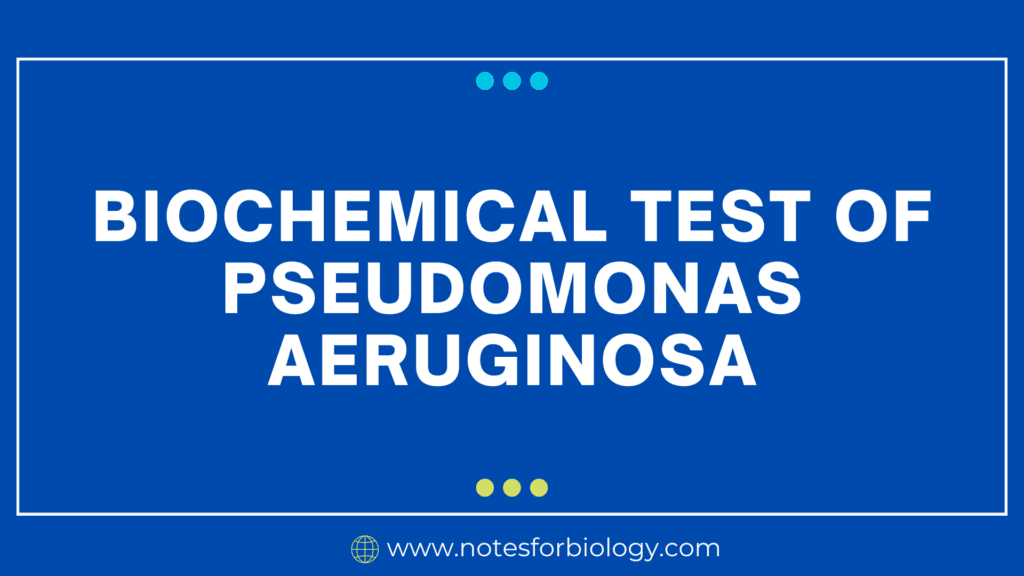What is Pseudomonas aeruginosa ?

One frequent opportunistic pathogen that can be discovered with a battery of biochemical assays is pseudomonas aeruginosa. These assays take advantage of the bacterium’s special metabolic properties and offer a trustworthy way to distinguish it from other closely related species.
It is typical bacterium that can be found on plants, in water, and in soil. Even while it’s usually benign, it can develop into a dangerous opportunistic infection, especially in individuals with compromised immune systems or underlying medical disorders.
Table of Contents
Biochemical Test
Test for Oxidase

Concept: Identifies the existence of cytochrome c oxidase, an enzyme found in many bacteria’s electron transport chain.
Method: On a filter paper, a bacterial colony is given a drop of oxidase reagent.
Result: Pseudomonas aeruginosa is known for its positive reactions, which are indicated by a quick change in colour to purple.
MacConkey Agar Growth
Concept: Gram-negative bacteria can grow selectively and differently in MacConkey agar. It has lactose and bile salts, which separate lactose fermenters from non-fermenters and prevent Gram-positive bacteria from growing.
Method: MacConkey agar plates are inoculated with the bacteria, and they are then incubated for 24 hours at 37°C.
As a result of not fermenting lactose, pseudomonas aeruginosa will develop as colour less colonies on MacConkey agar.
Development in Cetrimide Agar
Principle: Pseudomonas aeruginosa can be isolated using cetrimide agar, a selective medium made especially for that purpose.
Method: On Cetrimide agar plates, the bacteria are injected, and they are then incubated for 24 hours at 37°C.
Result: Because pyocyanin pigment is produced, Pseudomonas aeruginosa will grow as distinctive blue-green colonies on Cetrimide agar.
Production of Fluorescent Pigments
Principle: When exposed to UV radiation, Pseudomonas aeruginosa creates the fluorescent pigments pyoverdine and pyocyanin.
Method: An agar plate is used to cultivate a bacterial culture, which is then exposed to UV radiation.
Result: Pyoverdine is indicated by green fluorescence, and pyocyanin is indicated by blue-green fluorescence.
Test of Motility
Principle: The flagella of Pseudomonas aeruginosa allow for motility.
Method: An inoculation of a bacterial culture is made into a semi-solid medium, such as motility agar.
Result: Motility is indicated by growth extending from the inoculation site.
Test for Gelatin Hydrolysis
Principle: The enzyme gelatinase, which hydrolyzes gelatin, is produced by Pseudomonas aeruginosa.
Method: A gelatin stab is injected with a bacterial culture.
Result: The liquefaction of the gelatin surrounding the stab indicates a positive test.
Test for Nitrate Reduction
Principle: Nitrate can be reduced to nitrite by Pseudomonas aeruginosa.
Method: A nitrate broth is inoculated with a bacterial culture.
Result: After adding reagents to identify the presence of nitrite, the creation of a red colour indicates a positive test.
Indole Examination
Principle: No indole is produced by pseudomonas aeruginosa.
Method: A broth containing tryptophan is injected with a bacterial culture.
Result: The absence of a red colour following the addition of Kovac’s reagent indicates a negative test.
Test for Lysine Decarboxylase
Principle: Lysine decarboxylase is not produced by pseudomonas aeruginosa.
Method: A lysine decarboxylase broth is inoculated with a bacterial culture.
Result: If the broth’s colour does not turn purple after incubation, the test was unsuccessful.
Test for arginine Di hydrolase
Principle: Arginine Di hydrolase is not produced by pseudomonas aeruginosa.
Method: An arginine Di hydrolase broth is inoculated with a bacterial culture.
Result: If the broth’s colour does not turn purple after incubation, the test was unsuccessful.
Additional Examinations
API 20NE system This commercial system offers a thorough profile of the organism’s metabolic capacities by enabling the examination of several biochemical reactions at the same time.
DNA sequencing Although it is not a conventional biochemical test, It can be accurately identified and distinguished from closely related organisms using DNA sequencing.

It’s crucial to remember that in order to validate the diagnosis of Pseudomonas aeruginosa, these tests are usually carried out in conjunction with additional phenotypic traits such growth on selective media, colony shape, and Gramme staining.
Frequently Asked Questions(FAQ)
What is Pseudomonas aeruginosa ?
It is typical bacterium that can be found on plants, in water, and in soil. Even while it’s usually benign, it can develop into a dangerous opportunistic infection, especially in individuals with compromised immune systems or underlying medical disorders.
Write about API 20NE system ?
API 20NE system is commercial system offers a thorough profile of the organism’s metabolic capacities by enabling the examination of several biochemical reactions at the same time.
What is the result of Indole Examination ?
The result of Indole Examination is the absence of a red colour following the addition of Kovac’s reagent indicates a negative test.
Related Articles

